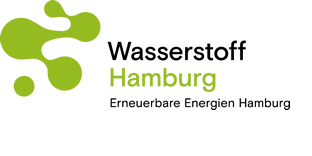Details
Together we can build the European Green Power Plant in the North Sea
With The Esbjerg Declaration, four of the most ambitious countries on renewable energy in the world have pledged to transform the North Sea into Europe's Green Power Plant.

The joint pledge will be crucial for us to be able to develop the innovative solutions needed to create the CO2-neutral energy sources of the future. Realizing the green ambition and securing a stable energy supply, based on renewable energy, will require cooperation on an industrial scale across Europe.
By Glenda Napier, CEO, Energy Cluster Denmark
It is very much “the winds of change” that are blowing in from the North Sea right now. In the middle of a worrying climate change as well as a geopolitical energy crisis, four of the North Sea's neighbors have decided to work together to solve both challenges in one, bold move:
Germany, the Netherlands, Belgium, and Denmark have pledged to cooperate in making the North Sea Europe's Green Power Plant and in producing sufficient wind energy and hydrogen to be able to supply more than half of Europe with CO2-neutral energy by 2050. It is an ambitious project that the four countries have agreed on. We must expand the North Sea's energy production to supply as much as 65 GW of wind energy already by 2030, and in 2050 we will increase that level to 150 GW - building new energy islands in the process!
It will require huge amounts of innovation - and not least it will require a lot of cooperation across sectors and borders. Robert Habeck, Germany's vice chancellor and economy minister, spoke of a "basis for the first truly European power plants" as the declaration was announced: "The projects are to be developed jointly, financed jointly and the electricity distributed jointly," he said, adding that the goal was "no longer for each country to do its own thing, but to approach this in a truly cooperative manner."
This is a very encouraging statement.
Getting to where we want to be in 2030 and 2050, we will have to break barriers on three levels:
- We must cross borders and work together on a legislative level. We cannot see one country’s energy production, distribution, and consumption as a closed circuit – we all share the ambition, the challenge, and the opportunity.
- We need to work on sector coupling. We are going to produce an enormous amount of wind energy; and the direct electrification cannot absorb it all. To fully utilize the prospects of this massive increase in production in a green transition, we need to get more sectors coupled with the sustainable energy. District heating, aviation, heavy road transport, shipping, the agricultural and industrial sectors all have the potential to be based on renewable energy sources.
- We must work together in creating new, innovative solutions. We already know that wind and solar energy are the basis, and that hydrogen is the intermediate. What comes after? Developing new innovative technologies in terms of storage, distribution, e-fuels, batteries to fuel the green transition is a momentous challenge – but also a fantastic opportunity.
At Energy Cluster Denmark, we are keen on connecting international partners and in being the neutral platform for industry majors, small- and medium sized enterprises, knowledge institutions, innovative startups, and organizations in developing new technologies enabling the green transition, and we are very much looking forward to interesting and innovative times ahead!


